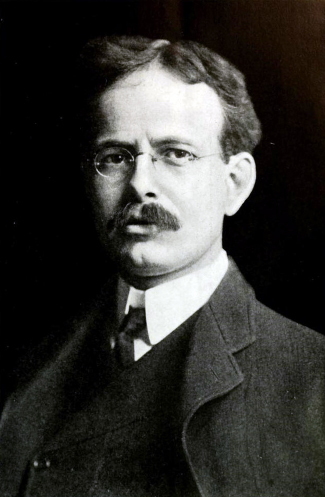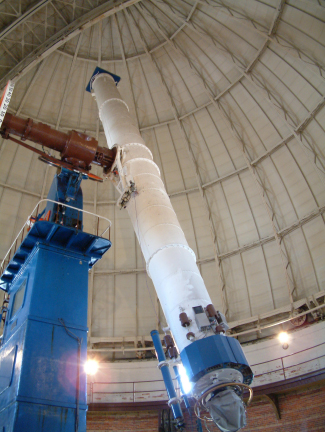| << Chapter < Page | Chapter >> Page > |
George Ellery Hale ( [link] ) was a giant among early telescope builders. Not once, but four times, he initiated projects that led to the construction of what was the world’s largest telescope at the time. And he was a master at winning over wealthy benefactors to underwrite the construction of these new instruments.

Hale’s training and early research were in solar physics. In 1892, at age 24, he was named associate professor of astral physics and director of the astronomical observatory at the University of Chicago. At the time, the largest telescope in the world was the 36-inch refractor at the Lick Observatory near San Jose, California. Taking advantage of an existing glass blank for a 40-inch telescope, Hale set out to raise money for a larger telescope than the one at Lick. One prospective donor was Charles T. Yerkes , who, among other things, ran the trolley system in Chicago.
Hale wrote to Yerkes, encouraging him to support the construction of the giant telescope by saying that “the donor could have no more enduring monument. It is certain that Mr. Lick’s name would not have been nearly so widely known today were it not for the famous observatory established as a result of his munificence.” Yerkes agreed, and the new telescope was completed in May 1897; it remains the largest refractor in the world ( [link] ).

Even before the completion of the Yerkes refractor, Hale was not only dreaming of building a still larger telescope but was also taking concrete steps to achieve that goal. In the 1890s, there was a major controversy about the relative quality of refracting and reflecting telescopes. Hale realized that 40 inches was close to the maximum feasible aperture for refracting telescopes. If telescopes with significantly larger apertures were to be built, they would have to be reflecting telescopes.
Using funds borrowed from his own family, Hale set out to construct a 60-inch reflector. For a site, he left the Midwest for the much better conditions on Mount Wilson—at the time, a wilderness peak above the small city of Los Angeles. In 1904, at the age of 36, Hale received funds from the Carnegie Foundation to establish the Mount Wilson Observatory. The 60-inch mirror was placed in its mount in December 1908.
Two years earlier, in 1906, Hale had already approached John D. Hooker, who had made his fortune in hardware and steel pipe, with a proposal to build a 100-inch telescope. The technological risks were substantial. The 60-inch telescope was not yet complete, and the usefulness of large reflectors for astronomy had yet to be demonstrated. George Ellery Hale’s brother called him “the greatest gambler in the world.” Once again, Hale successfully obtained funds, and the 100-inch telescope was completed in November 1917. (It was with this telescope that Edwin Hubble was able to establish that the spiral nebulae were separate islands of stars—or galaxies—quite removed from our own Milky Way.)
Hale was not through dreaming. In 1926, he wrote an article in Harper’s Magazine about the scientific value of a still larger telescope. This article came to the attention of the Rockefeller Foundation, which granted $6 million for the construction of a 200-inch telescope. Hale died in 1938, but the 200-inch (5-meter) telescope on Palomar Mountain was dedicated 10 years later and is now named in Hale’s honor.

Notification Switch
Would you like to follow the 'Astronomy' conversation and receive update notifications?